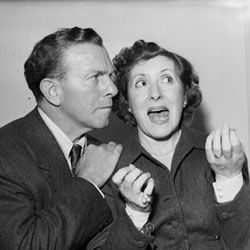If one were to reimagine the American political system as a high school cafeteria, the Republicans and Democrats would crowd the popular kids' tables, and the better-known third parties -- Libertarian, Green and Constitution -- might sit nearby, recognized for their plucky individualism but belonging to lower social strata nonetheless. Then, populating the outlying seats would be the lesser-known and downright quirky third parties that generally don't manage to get on many state ballots. Among those motley crews, one might easily identify groups such as the goth Vampyres Witches Pagans Party, the hippie-garbed Pot Party and the freewheeling Pansexual Peace Party, all of which have existed on the outskirts of U.S. politics [source: Bogart].
Whenever a presidential election rolls around, third parties often have a moment in the limelight, like unlikely candidates for homecoming court. Leading up to the 2012 election, for instance, a majority of adults in Gallup polls said they would welcome a third-party candidate to shake up the Republican and Democrat status quo [source: Jones]. In fact, a new third party called Americans Elect earned more than $35 million in donations and attracted significant mainstream media coverage, which led some to wonder whether it might be the solution to the bipartisan dilemma. By May 2012, however, Americans Elect had yet to turn up any viable presidential nominees, forcing it to fold operations and classing it with countless third parties past that couldn't muster enough popular patronage to compete against the political in-crowds [source: Leighton].
Advertisement
But while third parties haven't produced a presidential win since the 19th century, they've certainly left behind a colorful legacy, as evidenced by this snapshot of the strangest political parties in recent electoral history.





